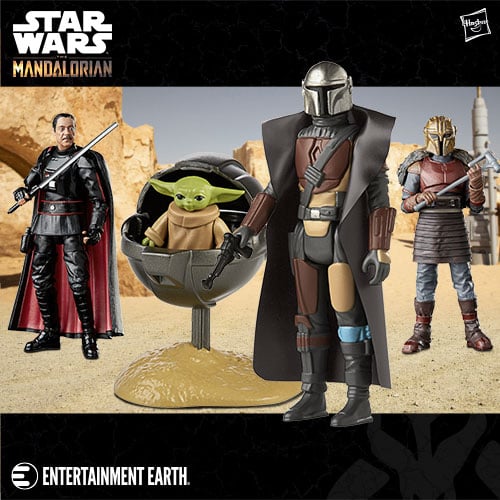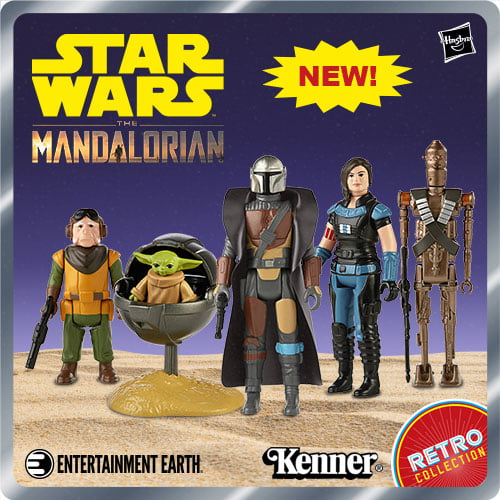TFN Review: Star Wars Art: Concept by Lucasfilm Ltd. (Foreword by Joe Johnston)
I’m of real mixed feelings when it comes to the Star Wars Art books. In some cases, they contain art I’ve never seen, or have seen on rare occasions, but not in books I own (such as Star Wars Art: Illustration); in other cases, they contain art that is great, but when taken out of context, is unfulfilling (such as the panel art in Star Wars Art: Comics). Star Wars Art: Concept has a great premise – a coffee table book with selections of conceptual art from artists as far back as the 70s (Ralph McQuarrie and Joe Johnston) through the prequels (Doug Chiang, Ryan Church), and all the way up to today, with concept art for the now defunct Star Wars: Detours and videogames such as Star Wars 1313 added into the mix.
The book contains 176 pages featuring 125 prints (featured as either single pages of art or double-page spreads), a meaningful foreword by Johnston and introduction by Chiang, with an afterword by Church and a J. W. Rinzler interview with Erik Tiemens, all of which allow the artists to look back at their time working on the Star Wars series at various points in the series’ creation. It should be a great read, with plenty of diverse artwork and styles to look at – and art that imagined the Star Wars universe at various stages – so what’s wrong?
The book starts with great printed reproductions of famous McQuarrie pieces (such as “Luke Skywalker [female] looks at the Tatooine Sky” and “Falcon in Mos Eisley Spaceport”). Many of the favorite McQuarrie prints – the ones you could look at all day – are here. There’s a small sampling of some great Johnston sketches for Empire, especially of Snowtroopers and an ATT tank (this piece is also seen in close-up on the book’s cover when the slipcase is removed).
The book works its way to Return of the Jedi with some rare painted art for unused concepts, including an Imperial shuttle over the Imperial Center on Had Abbadon, X-Wings attacking two Death Stars over Endor, and the rebel heroes on a grassland world overlooking Jabba’s palace. The book then segues into some concept art from Nevlana Studios from the Droids and Ewoks cartoon shows.
By page 45, we’re into prequel territory, with Episode I art by Doug Chiang, including concepts for a very platypus-like Jar Jar Binks, battle droids, ATTs carriers, Coruscant, and more. Some of Chiang’s concepts for Attack of the Clones are also featured before the book hits some fantastic digital paintings of the Battle of Geonosis by Church and Tiemens. Concept sketches are featured, such as an alien persona for Dooku and a more menacing, machinelike guise for Grievous. There’s some fanciful art, too, like a Kato Nemoidian in all his purple regal splendor riding a Kadu. Other artists and their contributions are featured as well.
It’s at the point of Revenge of the Sith that the pen and ink renderings seem to get phased out and digital painting—whether for a visualized battle scenes or the atmospheric planet scape of Polis Massa —steps forth, front and center. By reading the foreword, intro, afterword, and interview, one gets a very good idea of how the tools used for the trade influenced the look of the art—and why these tools become so heavily used (namely for speed, a necessity on a production where the director often changed and added sequences on the fly).
By page 104, the book has finished with prequel art and features conceptual paintings (mostly digital) for everything since 2005 – digital character concept art for Clone Wars characters such as Cad Bane; ice, desert, and brush environments (some with familiar aliens) for video games such as the Force Unleashed (including a “prototype” painting by Amy Beth Christensen for what would become the most recognized imagery from that game: Starkiller using the Force to bring down a Star Destroyer).
There are a few moody concept paintings for Star Wars Detours, with goofy super-deformed-like renderings of Jabba and Vader in their familiar environments. There’s some fanciful art, too, including a page of privately commissioned art (seemingly styled after famed SF artist Michael Whelan) of the “Betty Droid” in various poses. There’s a good number of concept paintings for abandoned games such as Star Wars: Alliance (a few feature rebel troops in their “Endor”-like forest gear facing off against various enemies in intense action scenes), as well as a fair share of newly-envisioned aliens for Star Wars 1313. Many of the paintings here are clearly modeled after McQuarrie’s style; the “Underworld Meeting” painting for Star Wars 1313, which has similarities to McQuarrie’s famed “Cantina” painting being the most obvious. There are several “lighter” pieces that show aspects of the Star Wars universe at play (such as the one of the “Coruscant Rooftops”), but many (such as Tiemen’s “Imperial Portal,” which features a massive Star Destroyer poised over a great metallic pit on the surface of Coruscant) are as dark and brooding as they are jaw-dropping.
First, the good: The selected art, for the most part, is magnificent. The A New Hope prints by McQuarrie reproduced on the page well here; and the size of the book allows for a solid presentation of this work. The book, which showcases some of what George Lucas considers the best concept art done in the past 40 years, is varied, and reflects the myriad styles and eras from when it was produced. After reading the printed material and viewing the pages, one can see how the imagery of the Star Wars universe evolved, how one generation of artists influenced the next, and how the tools of the trades evolved and shaped the style of the art. The presentation of the video game art, much of which has not seen print until now (namely owing to the fact that the games were not completed), is a welcome addition to the collection of any Star Wars enthusiast, especially those with an eye for the visuals.
Now the bad: While there is a fair representation of art from many eras, the book feels highly imbalanced. McQuarrie is represented by many paintings, but there are so many more that deserve to be featured. Some of the reproductions are not very good here: Starkiller vs. Vader, although featured on the slipcase, is cropped and enlarged to only feature Vader. McQuarrie’s Bespin painting is blown up to the point that the images of the city atop the floating platform are hazy. Johnston’s art is featured, as is work by his frequent collaborator, Nilo Rodis-Jamero; their concepts for Empire, including Slave 1 and Hoth vehicles, are given full or half-page treatment, but do not feel represented enough to get a full sense of their contribution to the franchise.
The Chiang art for Episode I is well represented, but has been seen many times before in Episode 1 art and making of-books; as it is designed to reflect a different era and style than the original films, the visual jump cannot avoid comparisons, especially when Chiang’s images use far less color. Things do pick up with the art from Episode II and III, but the presentation of the images here feel rushed; they look great, but seem to serve merely as a prelude for the digital art to come. In addition, both the digital prequel paintings, which fantastic in their own right, tend to reflect darker, muddier tones that will come into play with the video game art, and tend to imbalance the book from a sense of fun, fantastic escape art to one of more realistic, earthy foreboding. While one can appreciate the ease with which digital tools can give to a skilled illustrator, one also misses the style and skill of traditional illustration. Digital may be quick, but the paintings aren’t as nuanced; the images tend to blend together in the reader’s mind, and after a while of looking at such paintings, it’s hard to discern any particular artists’ style from another. The digital character sketches, though, prove to be a triumph here, and show just how useful the electronic paint box can be.
New to Star Wars Literature: If you’re new to Star Wars, this might satisfy your cravings for a good cross-section of art from all eras. On the other hand, there are other art books that can be purchased for the same amount (or less) that can give you either a good sampling or a specific taste of certain artists. If you’re into Star Wars video game art, or are just a completest, this might be worth picking up at a discounted price.
Beyond the Pages: Artwork from Star Wars Detours is featured here, as is art from several unproduced videogames (and some that were). However, with only a few written pages by key artists devoted to reminisces, there’s no real context given for the art; we take away our impressions (as one should with art), but here the work featuring unfinished projects is a tease. How neat would it be to see a book geared toward presenting the concepts and history behind aborted Star Wars projects and different Star Wars games? (The Insider has done articles about this, and many player’s guides feature behind-the-scenes art and info, but perhaps it’s time for a more overarching yet in-depth study to be done).
Say Again?: Two pages of privately-commissioned Betty Droid art? Really?
Fast and Furious Thoughts: This book is an attractive but ultimately mixed bag of some classic art, commonly-seen prequel art, heavy digital art, and very little exploration. It’s also a very fast skim (I won’t use the word read). This book is to the art books what Hasbro Evolution action figure sets are to character figures: A way of seeing the changes in prototype styles through the series, but the problem is that while the art is great in its own right, and even in its place in the chronology, there’s not enough connective tissue to link things satisfactorily, not enough context to appreciate the artists, and not enough of the early art to satisfy the idea of developing “concepts.”
In theory, Star Wars Art: Concept could be great, as it is; it’s above average, with enough little new things to make people happy, but not enough to make readers feel overwhelmed with joy. Perhaps the approach taken to the storyboards art (a book for prequels, a book for the original trilogy) might be the way for art books to go here to truly satisfy everyone.
6 1/2 lightsabers.
Related Stories:
TFN Review: Star Wars #11 By Brian Wood
TFN Review: The Making Of Return Of The Jedi By J.W. Rinzler
TFN Review: The Star Wars #3 By J.W. Rinzler
TFN Review: Star Wars: Complete Vehicles
TFN Review: Fate of the Jedi: Apocalypse by Troy Denning
* Got a question? Ask it here!
* Give The Above User A Sith Title [Version 3.0]
* Give the Following User a Jedi title








